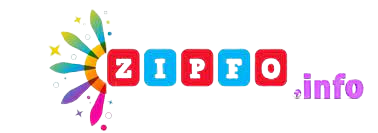What is a student loan?
A student loan is a type of loan that is specifically designed to help students pay for their higher education. These loans are typically issued by the government, but they can also be issued by private lenders. They can be used to pay for tuition, fees, room and board, books, and other education-related expenses. Student loans typically have a lower interest rate than other types of loans and can have more flexible repayment terms. However, they must be repaid, usually after the student graduates or stops attending school.
How to get a student loan?
There are several steps you can take to get a student loan:
- Complete the Free Application for Federal Student Aid (FAFSA): This form is used to determine your eligibility for federal student loans, grants, and other forms of financial aid. It's important to fill it out as early as possible, as many states and schools have deadlines for submitting the FAFSA.
- Review your financial aid award letter: After you've submitted the FAFSA, your school will send you a financial aid award letter, which will outline the types and amounts of financial aid you're eligible to receive.
- Accept the loan: If you decide to take out a student loan, you'll need to accept the loan offer by signing and returning any necessary forms to your school.
- Complete loan entrance counseling: Some federal loan programs require you to complete loan entrance counseling, which will provide you with information about your loan obligations, including interest rates, repayment terms, and more.
- Consider private student loans: If you've exhausted all other options, consider private student loans from banks, credit unions, and other financial institutions.
- Choose a repayment plan: After you graduate or leave school, you'll need to begin repaying your student loans. Depending on the type of loan, your loan servicer will provide you with different repayment plan options, like standard repayment, graduated repayment, and income-driven repayment.
It's important to note that, not everyone will qualify for a student loan, and you need to have a good credit score, co-signer, or a proof of income to get a loan. You should also be aware of the interest rate, repayment terms and the total amount of the loan before accepting it.
- Lowering interest rates on student loans: The Biden Administration has proposed to lower the interest rate on undergraduate student loans to 2.8%, which would be the lowest rate in decades.
- Automatic loan forgiveness: The Administration has proposed to automatically forgive $10,000 of student loan debt for borrowers with an annual income below $125,000.
- Expanding income-driven repayment plans: The Administration has proposed to make income-driven repayment plans available to all borrowers, regardless of when they took out their loans.
- Simplifying loan forgiveness: The Administration has proposed to simplify the process for loan forgiveness for public service workers, including teachers, first responders, and other public servants.
- Increase Pell Grants: The Administration has proposed to increase the maximum Pell Grant award, which is a form of need-based financial aid for low-income students.
- Public Service Loan Forgiveness (PSLF): This program forgives the remaining balance on Direct Loans for borrowers who have made 120 qualifying payments while working full-time for a government or non-profit organization.
- Income-Driven Repayment (IDR) Forgiveness: IDR plans, such as Income-Based Repayment (IBR), Pay As You Earn (PAYE), and Revised Pay As You Earn (REPAYE) plans, can forgive remaining loan balances after 20-25 years of payments, based on the borrower's income.
- Teacher Loan Forgiveness: This program provides loan forgiveness for teachers who work in low-income schools or educational service agencies.
- Military Service Loan Forgiveness: This program provides loan forgiveness for borrowers who are active duty military or veterans and have served in certain branches or capacities.
- State-Based loan forgiveness programs: Some states have their own loan forgiveness programs for residents who work in certain fields or in certain areas of the state.







.jpg)
.jpeg)



